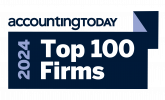Every year, the Tax-Exempt and Government Entities division (TEGE) of the Internal Revenue Service (IRS) issues a letter stating its priorities as part of the IRS’s 2023-2031 Strategic Operating Plan.
Along with the annual letter, the IRS posts new compliance program initiatives as they are launched. For fiscal year 2024, the TEGE Compliance Governance Board has issued new compliance programs for tax-exempt hospitals as well as tax-exempt collectives using name, image, and likeness (NIL) agreements with student-athletes. TEGE will also be continuing compliance with Section 4960 excise tax.
The IRS is focusing on verifying whether tax-exempt hospitals are in compliance with IRC Section 501(c)(3), including the community benefit standard as well as IRC Section 501(r). Brought about by the Patient Protection and Affordable Care Act, Section 501(r) requires tax-exempt hospital organizations to establish financial assistance and emergency medical care policies; limit the amounts charged to individuals eligible for assistance under the hospital’s financial assistance program (FAP); and make reasonable efforts to determine an individual’s eligibility under the hospital’s FAP before engaging in extraordinary collection actions. The strategy that the IRS will employ for verification is examinations.
In the wake of the Supreme Court’s NCAA v. Alston 2021 ruling, the NCAA implemented a name, image, and likeness (NIL) policy which permits student-athletes to earn compensation for the use of their name, image, and likeness. Tax-exempt organizations that identify as supporting athletes using NIL for compensation must disclose their activities in their application for exemption. They must show that those activities are in full compliance with existing legal requirements under 501(a). The strategy that the IRS will employ for verification is examinations.
Included in the Tax Cuts and Jobs Act, Section 4960 imposes a 21% excise tax on tax-exempt organizations that pay over $1 million in compensation to any “covered employee.” A covered employee is defined as “one of the five highest compensated employees of the organization for the taxable year” or “was a covered employee of the organization (or any predecessor) for any preceding taxable year beginning after December 31, 2016.” The IRS’s ongoing review of filing data shows that there is a high volume of exempt organizations that were required to report the excise tax on Form 4720, Return of Certain Excise Taxes Under Chapters 41 and 42 of the Internal Revenue Code, but failed to do so. The IRS’s strategies to be employed to ensure that Section 4960 is being followed are compliance checks and examinations of Form 4720.
About Schneider Downs Tax Advisors
With one of the largest regional tax practices in the country, Schneider Downs Tax Advisors’ personal focus on clients and in-depth understanding of current issues ensures that clients are complying with tax filing requirements and maximizing tax benefits. Our industry knowledge and focus ensure the delivery of technical tax strategies which can be implemented as practical business initiatives. Learn more at our dedicated Tax Services page.





